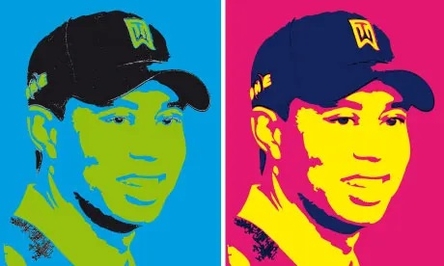"Growing up, I came up with this name: I'm a Cablinasian." — Tiger Woods, on his Caucasian, black, Indian, and Asian roots
 TIGER WOODS ISN'T alone. Millions of Americans are the children of interracial couples; tens of millions more have ancestors of multiple races. So it is a piece of welcome news that the government will finally abandon its insistence that each of us be shoehorned into one and only one racial category on government forms. Maybe we can now look forward to the day when the government stops classifying us as members of racial groups altogether.
TIGER WOODS ISN'T alone. Millions of Americans are the children of interracial couples; tens of millions more have ancestors of multiple races. So it is a piece of welcome news that the government will finally abandon its insistence that each of us be shoehorned into one and only one racial category on government forms. Maybe we can now look forward to the day when the government stops classifying us as members of racial groups altogether.
The Clinton administration announced that Americans for the first time will be allowed to select more than one racial classification when identifying themselves on the 2000 US Census and other federal forms. "Cablinasian" won't be an option, but Tiger Woods will be free to check off any or all of the following boxes: white, black, Asian, Native Hawaiian/Pacific Islander, or American Indian/Alaska Native.
It's a step in the right direction. Federal agencies should never have treated racial designations as mutually exclusive, since they never have been. Mixed-race unions have existed in America since colonial days, which helps explains why the notorious "one-drop rule" came into being. The rule, which defined as black a person with even one drop of "black blood," was originally a means of expanding the slave population by including the half-white children of slaveowners. As far back as George Washington's day, it was common to observe slaves whose skin was as light as their masters.
The US Census has always been obsessed with race. For decades it attempted to distinguish among degrees of blackness. Slaves had to be identified as "black" or "mulatto"; after 1890, mulattoes were broken down further into "quadroons" or "octoroons." These repulsive gradations were finally abandoned in 1920, when the government, harking back to the "one-drop rule," declared that it would deem anyone with any black ancestry at all as black.
But in recent decades, marriages across racial lines have skyrocketed, making blunt designations like "black" and "white" ever more hollow. As recently as 1970, fewer than 500,000 American children had parents of more than one race; by 1990, the number was up to 2 million. To force the daughter of, say, a black father and a Vietnamese mother to decide which little box she should check off — "black" or "Asian" — is absurd on its face.
But is it any less absurd to think that a little box marked "black" or "Asian" can say something meaningful about vast numbers of people with little or nothing in common? In the real world, Laotians, Japanese, and Filipinos do not consider themselves part of the same racial clan. They don't have the same look, speak the same language, or share the same culture. Yet in America, the government lumps them all together as "Asian." Does that racial denominator describe anything valid about them? It is demeaning to herd citizens into a single racial pen for no better reason than that some of their ancestors may have come from the same continent.
A bigger mystery is why the government herds us into racial pens in the first place. As scientists probe ever more deeply into the human genome, it becomes clear that race is just a social construct, not a biological truth. DNA doesn't come in colors, the "one-drop rule" notwithstanding. So why should the government concern itself with racial categories at all?
"It is tempting," write Stephan and Abigail Thernstrom in America in Black and White, their magisterial new study of race relations in the United States, "to halt the collection of all racial statistics by the Bureau of the Census, the Department of Justice, and other government bodies." Not because such statistics don't have their uses, but because they are too likely to have their misuses.
It isn't just on a single decennial census form that we are told to check off little racial boxes. Apply for a job, and you are asked your race. Bid on a public contract, and you are asked your race. Seek admission to a college, try to get financial aid, request a home mortage — and you are asked your race. From job promotions to congressional redistricting, we are increasingly viewed not as individuals but as members of racial groups. The government crunches numbers based on irrelevant criteria — skin color, eye shape — then uses those statistics to make decisions that affect us for life.
"Those very classifications pit members of one group against the other," the Thernstroms argue, "poisoning the racial atmosphere." The more the government demands racial data and the more it makes outcomes depend on race, the more it pushes all of us to dwell on racial differences. The perverse reality is that racial statistics create racial divisions.
It isn't written in stone that governments must count their citizens by race. Canada hasn't had a racial question on its census since 1951. And wasn't it just yesterday that the world shunned South Africa because of its racial classifications?
Tiger Woods is free to check off every little box on the next US Census form. He's also free to check off none. Who cares if he's "Cablinasian"? He's American. What more does the government need to know?
(Jeff Jacoby is a columnist for The Boston Globe).
-- ## --
Follow Jeff Jacoby on Twitter.
Discuss his columns on Facebook.
Want to read more? Sign up for "Arguable," his free weekly email newsletter.

